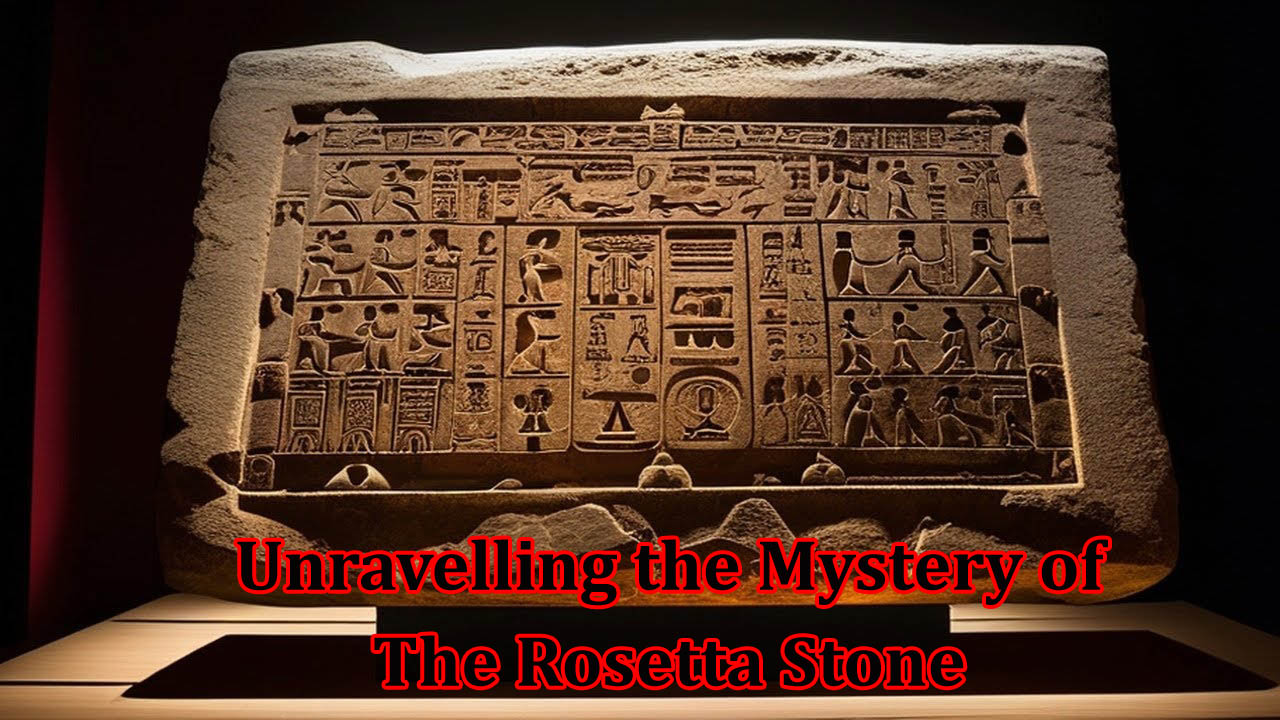Decoding the Past: Unravelling the Mysteries and Conspiracies Surrounding the Rosetta Stone

Mystery News
World
The Rosetta Stone, unearthed amidst the tumultuous backdrop of Napoleon Bonaparte's Egyptian campaign in 1799, serves as a beacon of ancient wisdom and intrigue. Beyond its surface lies a labyrinth of historical significance, decipherment challenges, and whispered conspiracies. This comprehensive report delves into the multifaceted narrative of the Rosetta Stone, exploring its enigmatic past, the journey of decipherment, and the allure of conspiracy theories that continue to shroud this iconic artifact.
Illuminating an Ancient Puzzle
In the annals of archaeological discovery, few artifacts evoke as much fascination and scholarly fervor as the Rosetta Stone. Its unearthing by French soldiers during Napoleon's expedition to Egypt unveiled a trove of linguistic mysteries, inviting generations of scholars to decipher its cryptic inscriptions.
Historical Context: Unveiling Royal Decrees
At the heart of the Rosetta Stone lies a proclamation from Egypt's Ptolemaic era, dating back to 196 BC. Crafted from black basalt, this decree served as a testament to the divine authority of King Ptolemy V, bestowing tax exemptions upon the priesthood and destined for prominence within the kingdom's temples.
The Multilingual Enigma: Unlocking Linguistic Gates
The Rosetta Stone's significance transcends its physical form, encapsulating a linguistic conundrum that perplexed scholars for centuries. Its trilingual inscription, featuring Ancient Greek, Demotic script, and hieroglyphs, presents a tantalizing enigma awaiting decryption.
The Decipherment Odyssey: Champollion's Triumph
For decades, the hieroglyphic script remained an impenetrable barrier to understanding ancient Egyptian culture. However, the pioneering efforts of Jean-François Champollion in the early 19th century shattered this linguistic impasse. Drawing upon the Greek text inscribed on the Rosetta Stone, Champollion embarked on a Herculean task of decipherment, unraveling the phonetic codes of hieroglyphic symbols and unlocking a treasure trove of ancient wisdom.
Legacy and Influence: Gateway to Ancient Egypt
The decipherment of the Rosetta Stone heralded a renaissance in the study of ancient Egypt, casting light upon its rich tapestry of history, culture, and religion. From the sacred rituals enshrined within temple walls to the timeless wisdom of the Book of the Dead, this iconic artifact opened a window into the soul of an ancient civilization.
Historical Documentation: Beyond its linguistic significance, the Rosetta Stone serves as a valuable historical document, providing insights into the politics, administration, and culture of ancient Egypt during the Ptolemaic era. The decree inscribed on the stone grants tax exemptions to priests and proclaims the divine rule of King Ptolemy V.
Cultural Exchange: The discovery of the Rosetta Stone sparked a renewed interest in ancient Egyptian culture and fostered cultural exchange between Europe and the Middle East. Scholars, travelers, and enthusiasts were inspired to delve deeper into the mysteries of Egypt, leading to expeditions, excavations, and the study of hieroglyphs.
Iconic Symbolism: As a tangible link to ancient civilizations, the Rosetta Stone has become an iconic symbol of human ingenuity, perseverance, and cross-cultural collaboration. Its image is widely recognized and replicated in various forms, from textbooks to souvenirs, symbolizing the quest for knowledge and understanding.
Technological Advances: The study and decipherment of the Rosetta Stone have driven technological advancements in fields such as linguistics, archaeology, and epigraphy. From early attempts at manual transcription to modern digital imaging techniques, researchers have utilized innovative methods to analyze and preserve this invaluable artifact.
Contentions and Cultural Reverberations
Yet, amid the celebration of scholarly achievement, the Rosetta Stone also serves as a lightning rod for controversy and conspiracy. Some whisper of hidden messages concealed within its inscriptions, suggesting a deeper layer of meaning beyond its historical facade. Others speculate on its extraterrestrial origins, weaving tales of cosmic intervention in the annals of human history.
Suppressed Knowledge: A notion persists that the true significance of the Rosetta Stone has been deliberately obscured or downplayed by authorities. This theory posits that the stone holds secrets about human history, religion, or technology that powerful organizations wish to keep hidden from the public.
Forgery or Alteration: A less common theory suggests that the Rosetta Stone is a forgery or has been altered over time. Proponents of this idea argue that the stone may not be as old or genuine as mainstream scholars believe, raising questions about its authenticity and the accuracy of the translations derived from it.
Editor’s Thoughts: A Beacon of Historical Revelation
In the hallowed halls of the British Museum, the Rosetta Stone stands as a testament to human ingenuity and the relentless pursuit of knowledge. Its journey from ancient decree to modern-day icon embodies the enduring quest to unravel the mysteries of the past. As scholars continue to decipher its inscriptions and explore the depths of its enigma, the Rosetta Stone remains a timeless symbol of humanity's unyielding curiosity and the boundless possibilities of discovery.


